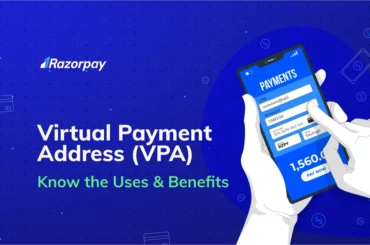With consumers fairly accustomed to making payments online, the question asked most often isn’t why should I transfer funds online? Which payment mode to choose from RTGS and NEFT? Though the idea of making payments online is hardly novel now, consumers make the basic mistake of sticking to one particular payment mode and using it endlessly. What one must realize is that the choice isn’t between two modes (the way one would choose between Coke and Pepsi), but is between two modes for separate situations. Both payment modes have their strengths within their segments. In this article, we will understand these strengths and ultimately decide which ones to use RTGS/NEFT and most importantly, when to use them!
Understanding RTGS
RTGS stands for real-time gross settlement. This electronic funds transfer method is used for high-value transactions, with its minimum transfer amount set to Rs 2 lakhs. Its real value lies in the fact that it enables instant transfers, which means that people do not have to worry about enduring endless waits. In order to use RTGS, the sender and receiver’s banks need to be RTGS enabled. From December 2020 onwards, RTGS transactions will be allowed 24×7 on all days.
Understanding NEFT
NEFT stands for National Electronic Funds Transfer and is also a means to transfer your funds electronically. However, unlike RTGS, this form of payments occurs in hourly batches. This means that if you initiate payment after a specific hour’s batch is already transferred, then you must wait until the next batch is ready to see the payment in action. If you’re wondering about NEFT timings, it’s important to note that NEFT operates in batches throughout the day, so you should plan your transactions accordingly. Interestingly, NEFT was lauded as the quickest method to transfer funds online until UPI came along in 2016.
Unlike RTGS, NEFT is not restricted to high-value transactions. There are no minimum or maximum limits to the funds that can be transferred, however, one can only transfer Rs 50,000 per transaction, making this a relatively slower option for those who want to make high-value transactions, when compared to RTGS.
The basic difference between RTGS and NEFT
The following table illustrates the main differences between RTGS, NEFT, and also IMPS, with respect to the way they both work:
| NEFT | RTGS | IMPS | |
| Minimum transfer amount | Re 1 | Rs 2 lakh | Re 1 |
| Maximum transfer amount | No upper limit | Rs 10 lakh | Rs 2 lakh |
| Type of settlement | Hourly batches | One-on-one settlement | One-on-one settlement |
| Speed of settlement | 2 hours (subject to cut-off timings and batches) | Immediate | Immediate |
This alone offers customers a glimpse into different times to use RTGS and NEFT. However, let us look at the same in broader detail:
Choosing between RTGS and NEFT
When choosing between RTGS and NEFT, customers must evaluate the following factors in order to make informed choices:
- Transfer Amount: To start with, identify how much you must transfer. If the transfer amount exceeds Rs 2 lakhs, then you can use RTGS as you can transfer the entire amount in one go, rather than in batches of Rs 50,000, which would be the case if you chose NEFT. Similarly, if the transfer amount is under Rs 2 lakhs, you have no option but to use NEFT as RTGS doesn’t apply to your needs
- Settlement Speed: In the event of an emergency, an hourly settlement period can become too much. Thus, evaluate whether your beneficiary requires the sum to be transferred (and received) on an immediate basis or not. This can help you effectively choose between RTGS and NEFT. If the settlement speed is not an issue, you can turn to other factors to help you decide
- Timing: From December 2019 onwards, NEFT payments will be available round the clock. RTGS transactions timings will also be 24×7 on all days from December 2020 onwards.
- Settlement Type: RTGS payments offer a one-on-one settlement while NEFT works in hourly settlements. Choosing between the two can sometimes rest on these factors alone
Finally, you must also make sure that the beneficiary’s account is RTGS enabled or NEFT enabled as this factor can sometimes make the decision for you!
But, one thing in common for both the payment modes is that there is NO transaction fees. RBI has scrapped transaction fees for all RTGS and NEFT transactions, irrespective of your bank, to promote digital transactions.
Conclusion
If you are wondering about which payment method is ideal for daily transactions, then the answer is neither. A far simpler solution is to use UPI in order to facilitate such transactions. Leave RTGS and NEFT for more formal transactions!



